CULTURAL TOURISM IN INDIA
Holi festival / festival of colours
Holi in English pronunciation is ( /ˈhoʊliː/) (Sanskrit: होली) is a spring festival also known as the festival of colours or the festival of love. Holi is celebrated on the PhalgunaPurnima (Full Moon). The festival date varies every year, per the Hindu calendar, and typically comes in March, sometimes February in theGregorian Calendar. The night before holi is celebrated there are Holika Bonfire. Holika bonfire is a unique cultural turism, when the night comes,people make a bonfire and called every people to come out and celebrate together. People dance and sing near the bonfire and have a great time.


After celebrated the night with holika bonfire, people celebrated holi festival (festival of colours). On the oli festival , you can spray colours on others, dance, party and eat festival delicacies.

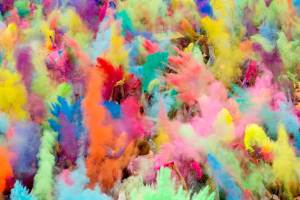
Holi featival is a festival for hindu’s people which has popular with non-hindus in many parts of the world. In holi festival all participants can chase and colour each other with dry powder and coloured water, with some carrying water guns and coloured water-filled balloons for their water fight. Anyone and everyone is fair game, friend or stranger, rich or poor, man or woman, children and elders.


The frolic and fight with colours occurs in the open streets, open parks, outside temples and buildings. There are a group or drummer that you can see in everyplace in india when holi’s come. The musician go from one place to anothe place to bring a happines. Some people will comes to their family to celebrated together and share a food that they made. In 2015 holi will held on Friday, March 6 and forholi will held in Wednesday, March 23. You can come to india one days before the festival begins, and feel the excitement in holika bonfire and holi festival.
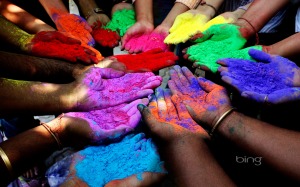
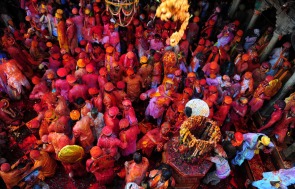
Deepawali or Diwali festival
Deepawali or Diwali is certainly the biggest and the brightest of all Hindu festivals. Deepawali or Diwali is called as festival of lights (deep = light and avali = a row i.e., a row of lights) that’s marked by four days of celebration. Each of the four days in the festival of Diwali is separated by a different tradition, but what remains true and constant is the celebration of life, its enjoyment and goodness.


Some people believe it to be the celebration of the marriage of Lakshmi with Lord Vishnu. Whereas in Bengal the festival is dedicated to the worship of Mother Kali , the dark goddess of strength. Lord Ganesha , the elephant-headed God, the symbol of auspiciousness and wisdom, is also worshiped in most Hindu homes on this day. In Jainism , Deepawali has an added significance to the great event of Lord Mahavira attaining the eternal bliss of nirvana .


Diwali also commemorates the return of Lord Rama along with Sita and Lakshman from his fourteen year long exile and vanquishing the demon-king Ravana. In joyous celebration of the return of their king, the people of Ayodhya, the Capital of Rama, illuminated the kingdom with earthen diyas (oil lamps) and burst crackers.
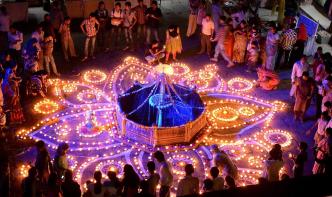

First day of deepawali or diwali festival is Naraka Chaturdasi which means to marks the vanquishing of the demon Naraka by Lord Krishna and his wife Satyabhama. Amavasya , the second day of Deepawali, marks the worship of Lakshmi , the goddess of wealth in her most benevolent mood, fulfilling the wishes of her devotees. Amavasya also tells the story of Lord Vishnu, who in his dwarf incarnation vanquished the tyrant Bali, and banished him to hell. Bali was allowed to return to earth once a year, to light millions of lamps to dispel the darkness and ignorance, and spread the radiance of love and wisdom. It is on the third day of Deepawali — Kartika Shudda Padyami that Bali steps out of hell and rules the earth according to the boon given by Lord Vishnu. The fourth day is referred to as Yama Dvitiya (also called Bhai Dooj ) and on this day sisters invite their brothers to their homes.
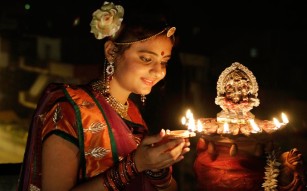
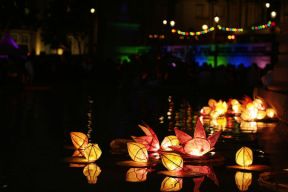
Deepawali or diwali is known as a hope “From Darkness Unto Light”. In deepawali or diwali festival the celebration is comes from Diya and lighting, home decoration, shopping, fireworks, puja (prayers), gifts, feast and sweets.


The things which is mention above iis everything that we need to do during the deepawali or diwali festival. The Date of deepawali or diwali festival is depend on Hindu Lunisolar calendar. In 2015 the date of diwali festival is comes to 11 November (Wednesday) and for 2016 diwali festifal will be held on 30 October (Sunday).


References
https://www.google.com/imghp?hl=en&tab=wi&ei=zgq5VJrdMc6FuwT894KACQ&ved=0CAQQqi4oAg
http://en.wikipedia.org/wiki/Holi
http://en.wikipedia.org/wiki/Diwali
http://hinduism.about.com/od/diwalifestivaloflights/a/diwali.htm



